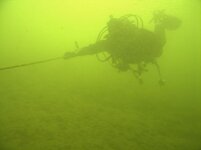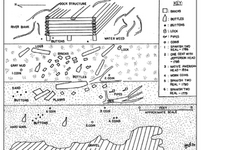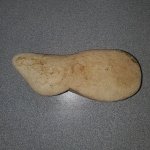To all remote sensing and river experts out there
We will be surveying some 30 miles of a small river, where navigation was frequent - the Phoenician, the Romanm the Visigoths, the Muslims, the Crusaders, the medieval Military Order of Santiago, all up to Napoleonic era river ships, all have sailed there.
if we scrap Pre History occupation, we are looking at around 4000 years of riverine navigation (this being the only way out for iron, copper and silver ore, cereals and salt, as well as being the only way in, and across, for armies, peregrines and passangers) and, hopefully, some wrecks and cultural deposits.
This river has never been dredged and has had only a medium size dam built further upstream.
Being integrated into a natural park, it has no houses or other infrastructures (besides the occasional road or bridge) built on, or around, it. It stays as it ever was, although with significantly less water being carried.
It's breadth is between 200 and 150 meters, sometimes less.
The depth, we are not sure, but we think it varies anywhere between 0 and -10 meters.
It has never been dived. Visibility upstream is mainly nil, but this varies, as the hight tide can reach up to 30 km inland.
Sediments consist of mud, silt and, downstream, some patches of sand.
The scarce finds reported are Roman amphorae, a Roman coin hoard - and thats about it.
We have no historical documents that narrate losses or shipwrecks, only medieval documents that point to an intense river trade and activity.
We intend to speak to fishermen and the rare wooden boat owners that know their way around for possible sites.
I am figuring a mag survey will be most useless, as the possible sites we are contemplating will be having very few iron artifacts within them.
I am also figuring a side scan sonar will be pointless as all sites will be buried in silt... so, how would you do it?
Any hints greatly appreciated.
We will be surveying some 30 miles of a small river, where navigation was frequent - the Phoenician, the Romanm the Visigoths, the Muslims, the Crusaders, the medieval Military Order of Santiago, all up to Napoleonic era river ships, all have sailed there.
if we scrap Pre History occupation, we are looking at around 4000 years of riverine navigation (this being the only way out for iron, copper and silver ore, cereals and salt, as well as being the only way in, and across, for armies, peregrines and passangers) and, hopefully, some wrecks and cultural deposits.
This river has never been dredged and has had only a medium size dam built further upstream.
Being integrated into a natural park, it has no houses or other infrastructures (besides the occasional road or bridge) built on, or around, it. It stays as it ever was, although with significantly less water being carried.
It's breadth is between 200 and 150 meters, sometimes less.
The depth, we are not sure, but we think it varies anywhere between 0 and -10 meters.
It has never been dived. Visibility upstream is mainly nil, but this varies, as the hight tide can reach up to 30 km inland.
Sediments consist of mud, silt and, downstream, some patches of sand.
The scarce finds reported are Roman amphorae, a Roman coin hoard - and thats about it.
We have no historical documents that narrate losses or shipwrecks, only medieval documents that point to an intense river trade and activity.
We intend to speak to fishermen and the rare wooden boat owners that know their way around for possible sites.
I am figuring a mag survey will be most useless, as the possible sites we are contemplating will be having very few iron artifacts within them.
I am also figuring a side scan sonar will be pointless as all sites will be buried in silt... so, how would you do it?
Any hints greatly appreciated.






